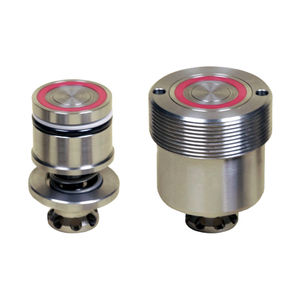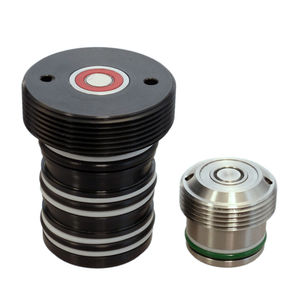
- Products
- Coupling system
- HYDROKOMP
Coupling system 100-2



Add to favorites
Compare this product
Description
Manual coupling systems are applied with machine tools that operate with hydraulic fixtures but do not have a standard equipment of a hydraulic interface for oil supply to the fixture pallet. The operating personnel take care of coupling and decoupling. In contrast to quick-locking couplings, manual couplings do not bear the danger of mixing up pressure line and tank line. Also, the coupling process is made much faster. After clamping the workpiece it is easy to unclamp the system without effort by the use of a hydraulically piloted check valve. Also the system pressure remains. To unclamp the system the T-port must be pressurized. At the single-acting coupling system the ball valve takes this feature.
Required safety elements are already integrated. These include one hydraulic accumulator, one check valve and one pressure relief valve which protects the hydraulic accumulator from a pressure rise over 10%. The coupling unit can be equipped with two different hydraulic accumulators. HYDROKOMP recommend the accumulator with 13 cm³ nominal volume up to an oil volume of approx. 100 cm³ in the fixture. When the required oil volume is larger, the hydraulic accumulator with 40 cm³ nominal volume should be applied. The hydraulic accumulators are subject to technical rules for pressure vessels. As standard the manual coupling systems are equipped with manifold and G1/4 threaded ports for oil supply. All flange-on surfaces have O-ring counter-bores on the bottom and on the rear side, which also allow oil supply without pipes through drilled ducts.
Special features:
versatile mounting options
safety elements are integrated
Catalogs
No catalogs are available for this product.
See all of HYDROKOMP‘s catalogs*Prices are pre-tax. They exclude delivery charges and customs duties and do not include additional charges for installation or activation options. Prices are indicative only and may vary by country, with changes to the cost of raw materials and exchange rates.




